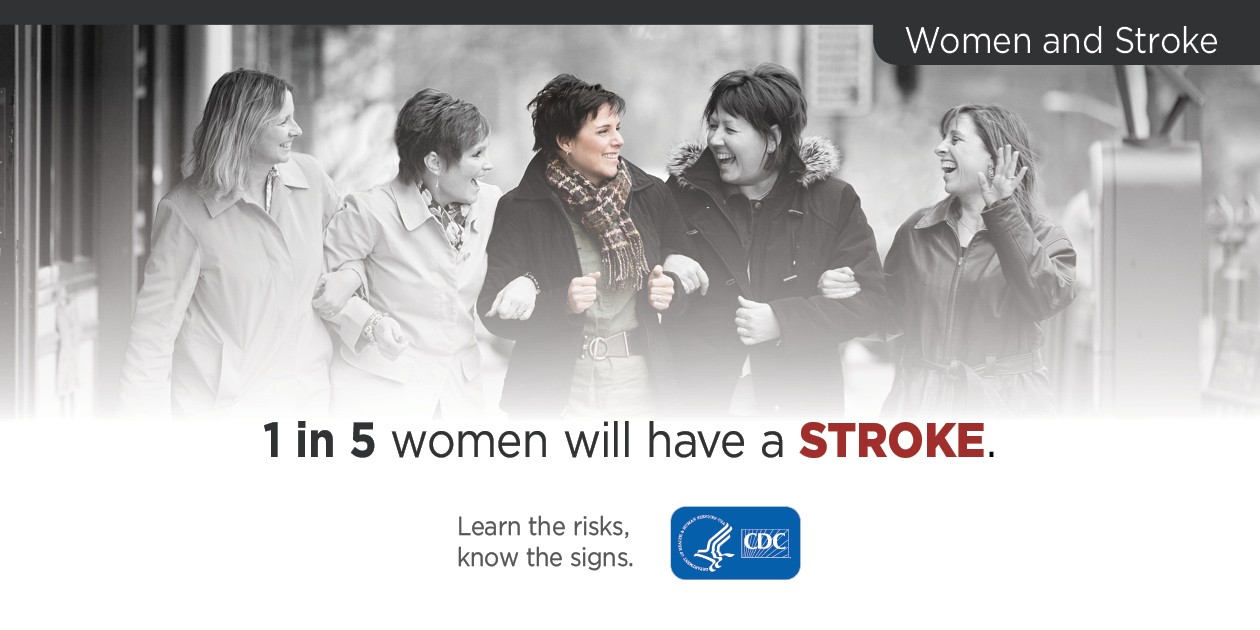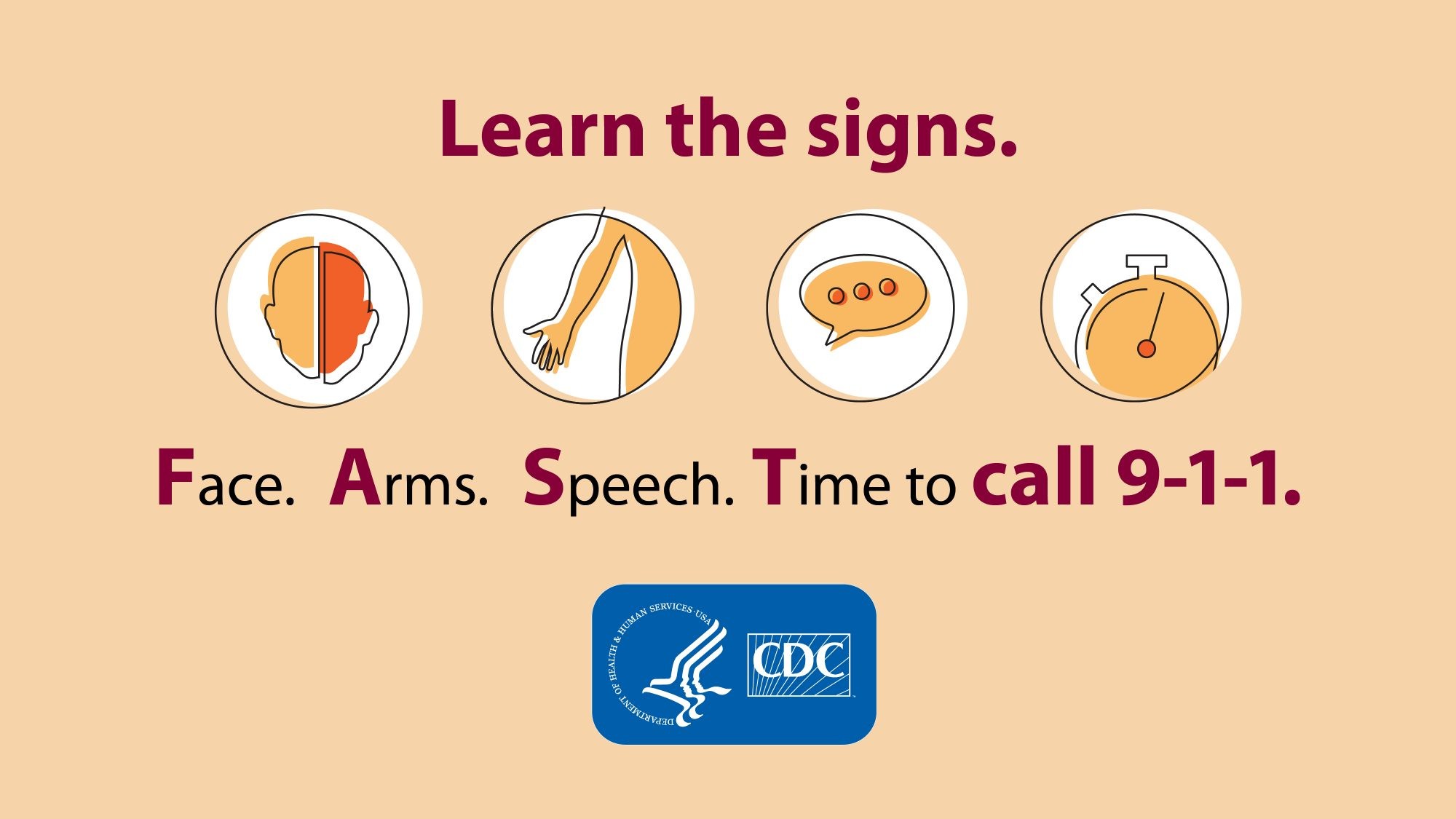STROKE AWARENESS Month: May 2019
By the year 2030, 72 million Americans will be 65 or older. Our future generations will be older plus more racially and ethnically diverse. It is expected that 500,000 will people in the US will experience a stroke each year. In addition to a leading cause of death, strokes cause more long-term disabilities than any other disease. 75% of strokes occur after the age of 65 and risk doubles each year over the age 55. Conversely, 25% of strokes occur in people under age 65. https://www.stroke.nih.gov
Stroke is defined as “the sudden death of brain cells in a localized area due to inadequate blood flow.” When blood flow to the brain is interrupted, the brain cells in the immediate area begin to die due to a lack of oxygen and needed nutrients. For every minute a stroke goes untreated, 1.9 million neurons are lost.
2 Types of Stroke
Hemorrhage
- A blood vessel in the brain breaks and bleeds into the surrounding area. These account for 20% of stroke.
Ischemic
- A blood clot blocks or plugs a brain artery. These account for 80% of strokes.
Stroke in Minorities and Women

Women and minorities are particularly susceptible to stroke. Women account for 55,000 more strokes per year vs. men. A larger proportion of women tend to be alone when a stroke occurs. They are more likely to have a poorer prognosis and live in long-term care facilities after the event. In general, ethnic minorities have a higher stroke risk than Caucasians. Genetics and family history can’t be changed but hypertension and diabetes can be controlled and managed. African-Americans are 2 times more likely to die of a stroke and the rate of first stroke is almost double that of Caucasians. 1/3 of African-Americans have hypertension and are less likely to have it under control. Sickle-cell Anemia, a genetic blood disorder, is another cause for concern. Some studies cite 75% of Hispanic Americans and 72% of women are overweight or obese, and 30% of Hispanics have Diabetes. Native Americans/Alaskan Natives are 24 more times more likely to have a stroke. Stroke is the number 6 cause of death in these populations (heart disease is #1). Asian-Americans have a lower rate of obesity and high blood pressure but are still 20% more likely to suffer a stroke vs. Caucasians.
Know the signs of Stroke and act in time
Time is critical for stroke treatment. The optimal window of opportunity for stroke treatment is 3 hours. For a person to be properly evaluated and treated, they need to get to a hospital within 1 hour. A 5 year clinical study by the National Institute of Neurological Disorders and Stroke (NINDS) found patients who received appropriate treatment within 3 hours of the event were 30% more likely to recover with little to no disability after 3 months https://www.ninds.nih.gov/Disorders/All-Disorders/stroke-Information-page
ACT F.A.S.T.
Face
Smile or droop?
Arms
Raise both? Equally?
Speech
Repeating a simple phrase, slurring?
Time
Any of the above?? Call 9-1-1
Download a printable FAST wallet card.

